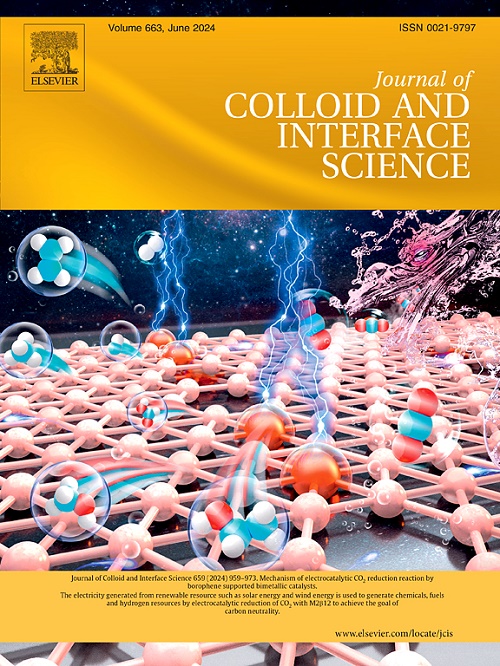Coupled electrostatic induction strategy toward polyaniline-derived hard carbon with uniformly microporous boosts high-rate sodium storage
IF 9.4
1区 化学
Q1 CHEMISTRY, PHYSICAL
引用次数: 0
Abstract
Constructing a uniform and controllable hard carbon anode with suitable micropores can effectively improve the overall sodium storage performance. Herein, an electrostatic induction strategy was used to change the structure of micelles by adding surfactant content to form polyaniline (PANI) with different morphologies. The presented synthesis method is characterized by the introduction of oppositely charged surfactants to induce rapid nucleation and the formation of foams with small pore sizes, which are then transformed into homogeneous microcellular pores by high-temperature carbonization. Thus, the microporous structures in hard carbon anode provide excellent electrochemical storage sites for sodium ion storage. As a consequence, the sodium dodecyl benzene sulfonate (SDBS) electrostatic induced PANI-derived hard carbon (SD-HC) showed a uniform pore structure with low surface area (14.54 m2 g−1) and uniform micropores (1.54 nm), which used as an anode material for sodium storage can provided high reversible capacity of 282.4 mAh g−1 at 50 mA/g, excellent rate performance (196 mAh g−1 at 5 A/g) and cycling stability (93.3 % capacity retention after 1000 cycles at 1 A/g). This simple and efficient synthesis strategy provides an effective guide for the design of nanostructures for the preparation of similar functional polymeric materials.

针对具有均匀微孔的聚苯胺衍生硬碳的耦合静电感应策略可提高钠的高储存率。
构建具有合适微孔的均匀且可控的硬碳阳极可有效提高整体钠存储性能。本文采用静电诱导策略,通过添加表面活性剂来改变胶束的结构,从而形成不同形态的聚苯胺(PANI)。该合成方法的特点是引入带相反电荷的表面活性剂,诱导快速成核并形成孔径较小的泡沫,然后通过高温碳化将其转化为均匀的微孔。因此,硬碳阳极中的微孔结构为钠离子储存提供了极佳的电化学储存场所。因此,十二烷基苯磺酸钠(SDBS)静电诱导的 PANI 衍生硬碳(SD-HC)呈现出均匀的孔隙结构,具有较低的表面积(14.54 m2 g-1)和均匀的微孔(1.54 nm),用作储钠阳极材料可提供高可逆容量(50 mA/g 时为 282.4 mAh g-1)、优异的速率性能(5 A/g 时为 196 mAh g-1)和循环稳定性(1 A/g 时循环 1000 次后容量保持率为 93.3%)。这种简单高效的合成策略为制备类似功能聚合物材料的纳米结构设计提供了有效指导。
本文章由计算机程序翻译,如有差异,请以英文原文为准。
求助全文
约1分钟内获得全文
求助全文
来源期刊
CiteScore
16.10
自引率
7.10%
发文量
2568
审稿时长
2 months
期刊介绍:
The Journal of Colloid and Interface Science publishes original research findings on the fundamental principles of colloid and interface science, as well as innovative applications in various fields. The criteria for publication include impact, quality, novelty, and originality.
Emphasis:
The journal emphasizes fundamental scientific innovation within the following categories:
A.Colloidal Materials and Nanomaterials
B.Soft Colloidal and Self-Assembly Systems
C.Adsorption, Catalysis, and Electrochemistry
D.Interfacial Processes, Capillarity, and Wetting
E.Biomaterials and Nanomedicine
F.Energy Conversion and Storage, and Environmental Technologies

 求助内容:
求助内容: 应助结果提醒方式:
应助结果提醒方式:


